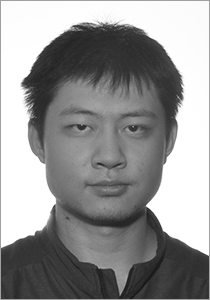Citation

Shocks are some of the oldest known, most intensely studied space plasma phenomena. They are implicated in the production of solar energetic particles and galactic cosmic rays, both important for space weather. Yet questions remain about how they operate. It is unclear why particle acceleration at shocks is observed to be far more effective than can be explained by modern shock theories. Also, computer simulations have revealed that a variety of nonlinear, transient structures are very common ahead of shocks and thus need to be incorporated into our theories. But what tangible information about these ethereal and often distant phenomena can we base such theories on? Enter Terry Liu’s thesis. With originality and independence, Terry used Earth’s bow shock as an ideal laboratory to study foreshock transients and particle acceleration in generalized shock settings. In eight highly cited AGU and Science Advances publications, he showed how foreshock transients form, grow, evolve, create their own shocks, interact with the parent shock, and accelerate ions and electrons in a highly dynamical setting. He used comprehensive, in situ, multispacecraft data analysis, aided by powerful analytical models, and comparisons with hybrid simulations. His work has turned foreshock transients from an intellectual curiosity to a required element of any modern-day shock acceleration model.
—Vassilis Angelopoulos, Department of Earth, Planetary and Space Sciences, University of California, Los Angeles
Response
I want to thank the award committee of the AGU Space Physics and Aeronomy section. I am deeply honored to receive this award, especially because this is the same award that my supervisor, Prof. Vassilis Angelopoulos, received 26 years ago. I would like to express my sincere gratitude to him, who led me into the Time History of Events and Macroscale Interactions during Substorms (THEMIS) group at the University of California, Los Angeles (UCLA), taught me numerous knowledge and skills, and trained me to be a space scientist. I also want to thank Dr. Drew Turner and Dr. Heli Hietala for guiding me to my specific research field, foreshock transients and their particle acceleration. I thank my close collaborator, Dr. San Lu, who has assisted me a lot on computer simulations. I also appreciate all the help from and meaningful discussion with my dear colleagues and friends at UCLA. Now supported by a Jack Eddy fellowship, I have moved to the Geophysical Institute at the University of Alaska Fairbanks. In this cold but beautiful place, I look forward to my new research experience and continuing to discover the mystery of shocks.
—Terry Zixu Liu, University Corporation for Atmospheric Research, Boulder, Colo.
Citation:
(2020), Liu receives 2019 Fred L. Scarf Award, Eos, 101, https://doi.org/10.1029/2020EO149224. Published on 16 September 2020.
Text © 2020. AGU. CC BY-NC-ND 3.0
Except where otherwise noted, images are subject to copyright. Any reuse without express permission from the copyright owner is prohibited.
